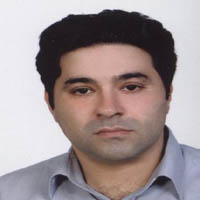Explain the concepts of public policy in metropolitan areas Case study Ahvaz
In the current research, with the content framing of public policy based on urban governance, the cause and effect relationship of integrated urban management and institutionalism as a driving tool of public policy is explained. In the current research, with the content framing of public policy based on urban governance, the cause and effect relationship of integrated urban management and institutionalism as a driving tool for public policy is explained. In this regard, the operational content of the research of certain types of Ahvaz metropolis is focused on the many problems of the developed managerial and institutional levels of urban development management. The method of data collection is the library-document method for theoretical studies and thematic investigation. Information collection tools are used in the library methods of scanning and computer tables for the use of materials and documents in survey methods, news observation methods, questionnaires or interviews are used to collect the required data. The statistical population studied in this research: Ahvaz metropolis includes elites and managers of urban and urban planning. The classification sampling method is simple and Morgan's sample size determination table was used to determine the sample size. Based on this, the number of 50 sample people has been determined. Executive and social components have a far greater contribution compared to other variables in predicting the dependent variable, such that a unit change in executive, social and legal standard deviation causes the standard deviation of the dependent variable (public policy) to increase by 92 , 38 and 10 percent to change. The results show that the critical values show the significance of each of the parameters and if the CR value is greater than the absolute value of 1.96, then the model parameters are significant. Considering that all the significant numbers of all parameters of the model are greater than 1.96, and the significance level of all questions of the questionnaire is calculated to be less than 0.05, the validity of the measurement structures of the relevant variables can be confirmed at the significance level of 0.05.
-
Implementing principles of smart urban management to combat pandemic diseases in order to achieve the principles of the future city. (Case study: Karaj city)
Mehdi Kohantorabi, *, Shadi Pakzad
Journal of Future Cities vision, -
Investigating the Status of Good Urban Governance Indicators and Their Impact on Urban Regeneration(Case Study: The Worn Texture of Semnan City)
Seyed Mohammad Nazem Razavi, *, Seyed Mohammad Rashtiyan
spatial planing,


